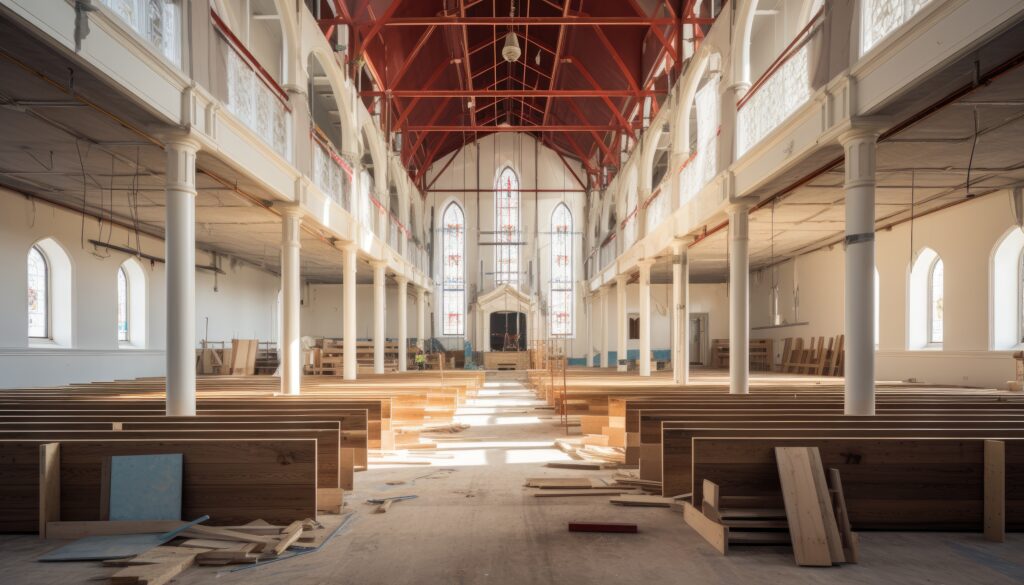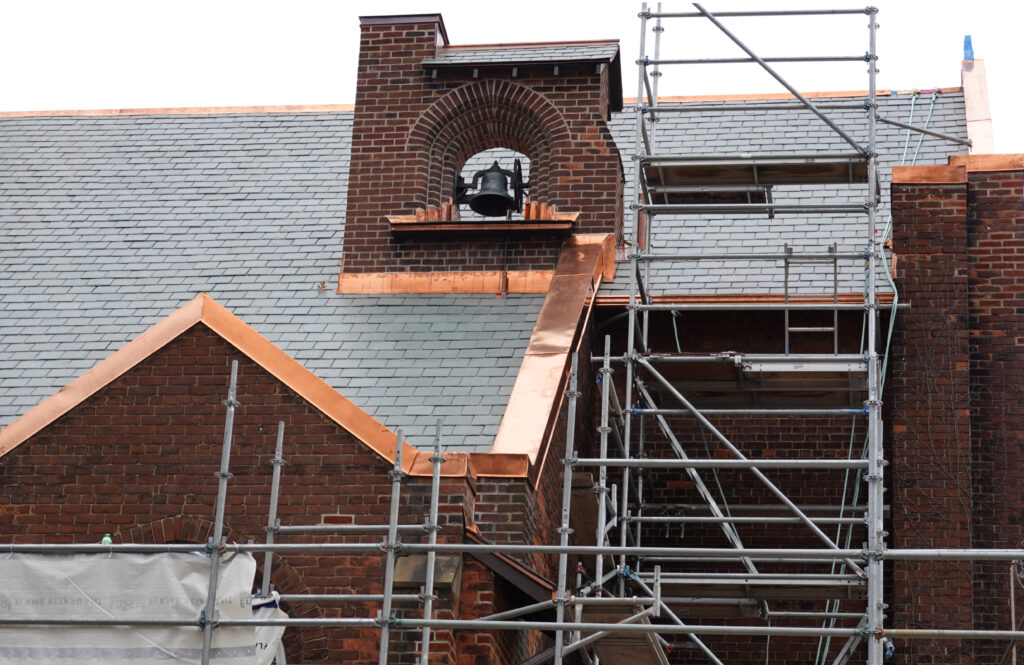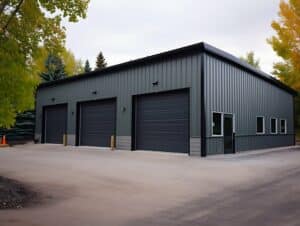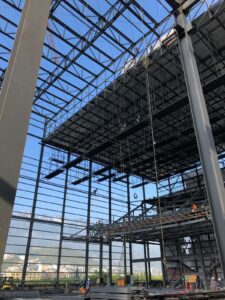Churches often require funding for construction projects, and securing church construction loans is a crucial part of the process. Understanding the basics of these church loans, preparing for the application, and navigating the application process are all important steps for a successful outcome.
Additionally, being aware of key terms and conditions, as well as the risks and challenges involved, can help churches make informed decisions throughout the loan process.
Table of Contents
- Understanding Church Construction Loans
- Preparing to Apply for a Church Construction Loan
- The Application Process for Church Construction Loans
- Key Terms and Conditions of Church Construction Loans
- Types of Church Buildings to Consider
- Risks and Challenges in Securing Church Construction Loans
- Conclusion
- Frequently Asked Questions
Understanding Church Construction Loans
Before delving into the details, it is essential to grasp the fundamentals of church construction loans. These loans provide financing for constructing or renovating church facilities.
Typically, the loan covers the costs associated with land acquisition, architectural design, construction materials, labor, and any necessary permits or certifications.
Why do churches need construction loans? The need may arise due to church growth, expanding ministries, or outdated facilities that require upgrades.
In such cases, construction loans offer a viable solution for churches seeking to create a comfortable and functional environment for their congregation.
When it comes to securing a church construction loan, there are several key factors that lenders consider. One crucial aspect is the financial stability of the church.
Lenders will assess the church’s income streams, expenses, and overall financial health to determine the loan amount and terms.
Check out: Foundations Of Building A Church Building
Additionally, the church’s building plans and construction timeline play a significant role in the loan approval process. Lenders want to ensure that the project is well-planned and feasible within the agreed-upon timeframe.
Furthermore, churches embarking on construction projects often face unique challenges compared to other commercial ventures.
Community support and involvement are vital for the success of the project. Many churches rely on fundraising efforts and donations from their members to supplement the construction loan and cover any additional costs that may arise during the building process.
Building a new church or renovating an existing one is not just a financial endeavor but also a spiritual and communal one, bringing the congregation together in a shared vision for the future.
Preparing to Apply for a Church Construction Loan
Before applying for a construction loan, it is important to assess your church’s financial health. This involves evaluating the current assets, existing debts, and ability to generate sufficient income to cover loan repayments.
Engaging a financial advisor or consultant can provide valuable insights and assist in identifying any areas that may need improvement.
Gathering the necessary documentation is another crucial step in the preparation process. Lenders typically require financial statements, tax returns, construction plans and cost estimates, architectural renderings, and other relevant paperwork.
Ensure that all documents are accurate, organized, and readily accessible to expedite the church loan application process.
Additionally, it is essential to have a clear understanding of the loan terms and conditions before proceeding with the application.

Familiarize yourself with the interest rates, repayment schedule, fees, and any potential penalties for early payment or default. This knowledge will help you make informed decisions and avoid any surprises during the loan repayment period.
Furthermore, establishing a strong relationship with potential lenders can enhance your chances of securing favorable loan terms.
Attend networking events, schedule meetings with loan officers, and demonstrate your church’s commitment to the project. Building trust and credibility with lenders can lead to more flexible terms and better overall financial support.
Pro tip:
The number of banks willing to consider loans for faith-based non-profits is high, but long-term commitments from banks are rare. Churches are advised to seek financial partners with experience in the sector.
The Application Process for Church Construction Loans
Choosing the right lender is paramount to the success of your loan application. It is advisable to research and approach institutions with experience in church construction loans.
Look for lenders who understand the unique needs and challenges of religious organizations. Building a good relationship with the lender can enhance your chances of securing the loan.
Navigating the actual church loan application process requires attention to detail and adherence to strict timelines. Be prepared to provide comprehensive information regarding your church’s financial situation, construction plans, and the intended use of the loan funds.
It is essential to fill out all necessary forms accurately and provide any requested supplemental information promptly.
When selecting a lender for your church construction loan, consider their track record in financing similar projects. A lender with a history of supporting church construction projects may offer valuable insights and guidance throughout the loan application process.
Additionally, inquire about the flexibility of the loan terms and any specific requirements related to church construction loans.
Before submitting your loan application, ensure that your church’s financial documents are organized and up-to-date. This includes balance sheets, income statements, and budgets related to the construction project.
Providing clear and transparent financial information can instill confidence in the lender regarding your church’s ability to repay the loan.
Pro tip:
To obtain a loan, you must present detailed financial records such as income statements, balance sheets, and cash flow forecasts. It’s critical that these documents are both accurate and current. Additionally, it’s advisable to explore various lenders to compare the interest rates and conditions of their loans. Consider the merits and drawbacks of both fixed and variable interest rates, taking into account their impact on the church’s financial stability over time.
Key Terms and Conditions of Church Construction Loans
Interest rates and repayment terms are vital aspects of any loan. When exploring church construction loans, it is important to understand the rates and terms offered by different lenders.
Factors like credit history, financial stability, and the loan amount requested can influence the interest rate and repayment terms.
Loan covenants are another significant consideration. These are conditions set by the lender that the borrower must meet throughout the loan term.
Common covenants include maintaining certain financial ratios, providing regular financial statements, and obtaining lender approval for any major financial decisions. Understanding and complying with these covenants are crucial for loan compliance and long-term success.
Additionally, it’s essential to consider the loan-to-value ratio (LTV) when securing a church construction loan. The LTV ratio is a financial term used by lenders to express the ratio of a loan to the value of the asset being purchased.
For church construction projects, lenders typically prefer a lower LTV ratio, as it signifies less risk for the lender. A lower LTV ratio may result in more favorable loan terms, such as lower interest rates or higher loan amounts.
Another important factor to keep in mind is the disbursement schedule of the loan. Construction loans for churches often have a unique disbursement process where funds are released in stages as the project reaches certain milestones.
This staged disbursement helps ensure that the funds are used for their intended purpose and that the construction progresses according to plan.
Understanding the disbursement schedule and its requirements can help the borrower effectively manage the construction funds and avoid any delays in the project timeline.
Pro tip:
Church loans often have different terms and interest rates than traditional commercial loans. These loans may have higher interest rates due to the perceived higher risk associated with lending to nonprofit organizations.
Types of Church Buildings to Consider
After securing the loan, choosing the right type of building for your church is a critical decision that impacts the overall functionality, aesthetics, and budget of the project.
Different types of buildings offer various benefits and challenges, and it’s essential to select one that aligns with your church’s needs and financial capabilities.
Traditional Brick-and-Mortar Buildings
Traditional brick-and-mortar buildings are a popular choice for churches due to their durability, classic appearance, and historical significance. These structures often feature intricate architectural designs, stained glass windows, and spacious interiors that can accommodate large congregations. However, brick-and-mortar buildings can be expensive to construct and maintain, requiring significant investment in materials and labor.
Prefabricated Metal Buildings
Prefabricated metal buildings are becoming increasingly popular for church construction projects. These structures offer numerous advantages, including cost-effectiveness, quick construction times, and durability.
Metal buildings can be customized to meet the specific needs of the church, with options for large open spaces, classrooms, offices, and recreational areas.
Check out: All About Prefabricated Church Buildings
One of the key benefits of metal buildings is their resistance to weather-related damage, such as high winds, heavy snow, and earthquakes.
Additionally, metal buildings require less maintenance compared to traditional structures, resulting in long-term cost savings. T
hey are also energy-efficient, with options for insulation and climate control systems that can reduce utility costs.
Modular Buildings
Modular buildings are another viable option for churches looking to expand or build new facilities. These structures are constructed off-site in sections, then transported and assembled on the church property.
Modular buildings offer flexibility in design and can be expanded or reconfigured as the needs of the congregation change.
The primary advantage of modular buildings is their rapid construction time. Since the modules are built in a controlled environment, weather delays are minimized, and the overall construction timeline is shortened.
Modular buildings are also cost-effective and can be designed to meet various aesthetic and functional requirements.
Did You Know?
Modular buildings can be constructed 30% to 60% faster than traditional buildings. This speed reduces labor costs and allows for quicker occupancy.
Risks and Challenges in Securing Church Construction Loans
While church construction loans can be invaluable resources, there are potential risks and challenges to be aware of.
Common roadblocks in loan approval include insufficient collateral, inadequate financial documentation, and a lack of construction experience or expertise.
Overcoming these obstacles may require working closely with advisors, improving financial stability, and ensuring proper planning and documentation.
Check out: Understanding Church Loan Requirements
Managing risks and mitigating challenges is essential throughout the loan process.
This includes adhering to all lender requirements, being diligent in managing costs and timelines, and regularly communicating with the lender to address any concerns or issues that may arise.
Taking a proactive approach to risk management can help minimize potential hurdles.
It’s also important to consider the impact of external factors on securing church construction loans.
Economic conditions, interest rates, and market trends can all influence the availability and terms of financing.
Conducting thorough research and staying informed about the current financial landscape can help church leaders make informed decisions when seeking funding for construction projects.
Furthermore, building strong relationships with local community members, potential donors, and other stakeholders can enhance the church’s credibility and increase its chances of securing favorable loan terms.
Demonstrating community support and involvement in the construction project can not only attract potential lenders but also foster a sense of unity and purpose within the congregation.
Did You Know?
Financing platforms like CDF Capital and CFR have reportedly given out loans worth about $2 billion and $1 billion, respectively.

Conclusion
Securing church construction loans is a multifaceted process that requires careful planning, thorough preparation, and diligent management.
By understanding the fundamental aspects of these loans, preparing necessary documentation, and building strong relationships with lenders, churches can navigate the application process more effectively.
Awareness of key terms and conditions, along with proactive risk management, further ensures a smooth and successful loan experience.
Church construction projects are not just financial undertakings but also communal and spiritual endeavors that bring congregations together in pursuit of a shared vision.
With the right approach, churches can overcome the challenges involved and secure the funding needed to create or renovate facilities that enhance their mission and serve their communities.
SteelCo has decades of experience custom designing high-quality prefabricated steel buildings and churches, focusing on your precise needs.
We dropship PEMB materials nationwide, but if your project is in Georgia or Tennessee and you’re looking for church construction, we can bring it to life from the concept and design stage to project timeline coordination and completion. Learn more about our comprehensive services.
——————–
Frequently Asked Questions
Can smaller congregations secure church constuction loan?
Yes. Smaller congregations can secure financing, though they may need to demonstrate strong financial health and a clear repayment plan.
What are the common types of church loans?
Churches in the US have various loan options for construction projects, including mortgages, construction loans, nonprofit business loans, faith-based financial institution loans, alternative loans, and business lines of credit. These loans cater to different needs, offering flexibility in terms of interest rates, repayment terms, and accessibility. Churches can choose the best option based on their financial health, project scope, and long-term goals.
Can churches refinance existing debt with a new loan?
Yes, many lenders offer refinancing options to help churches manage their existing debt more effectively.
How long does the financing approval process take?
The church loan approval process typically takes 4 to 6 weeks from the church providing all necessary information. This duration can vary depending on the type of loan, the amount requested, and the church’s financial health.
How much can a church borrow for construction?
Churches can typically borrow between four to six times their gross tithes and offerings for construction projects. The exact amount depends on the church’s financial health, including its debt-to-income ratio and overall financial stability.
What are the typical interest rates for church loans?
Interest rates for church loans typically range between 4% and 7%, depending on the lender and the church’s financial health.
























